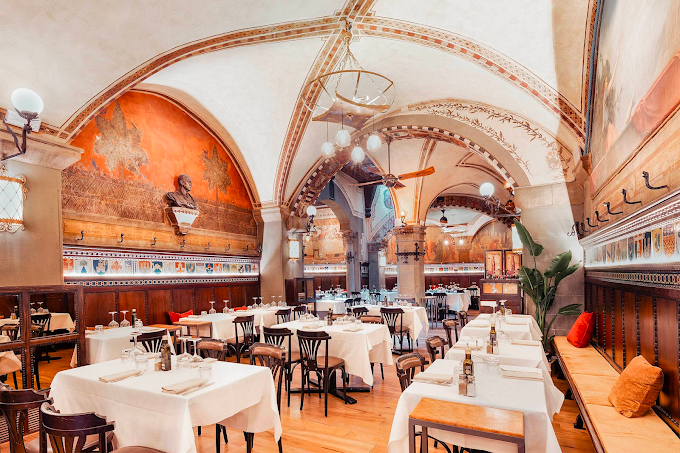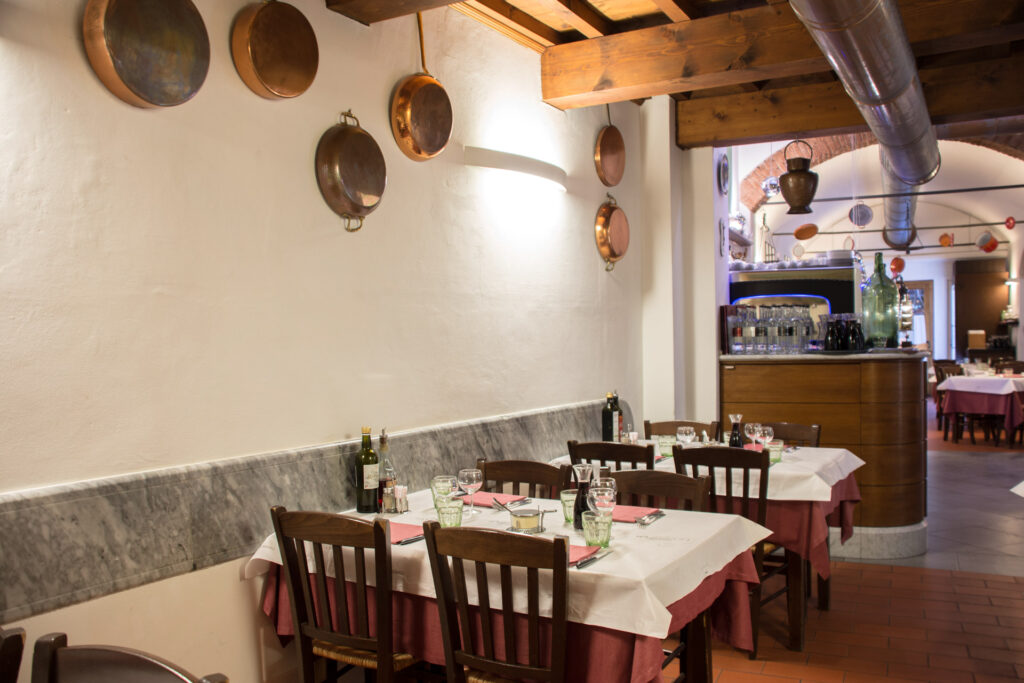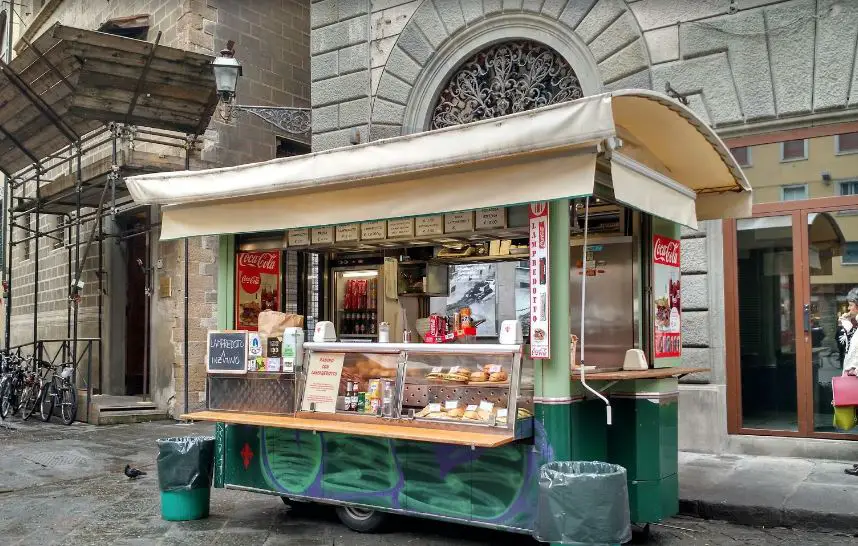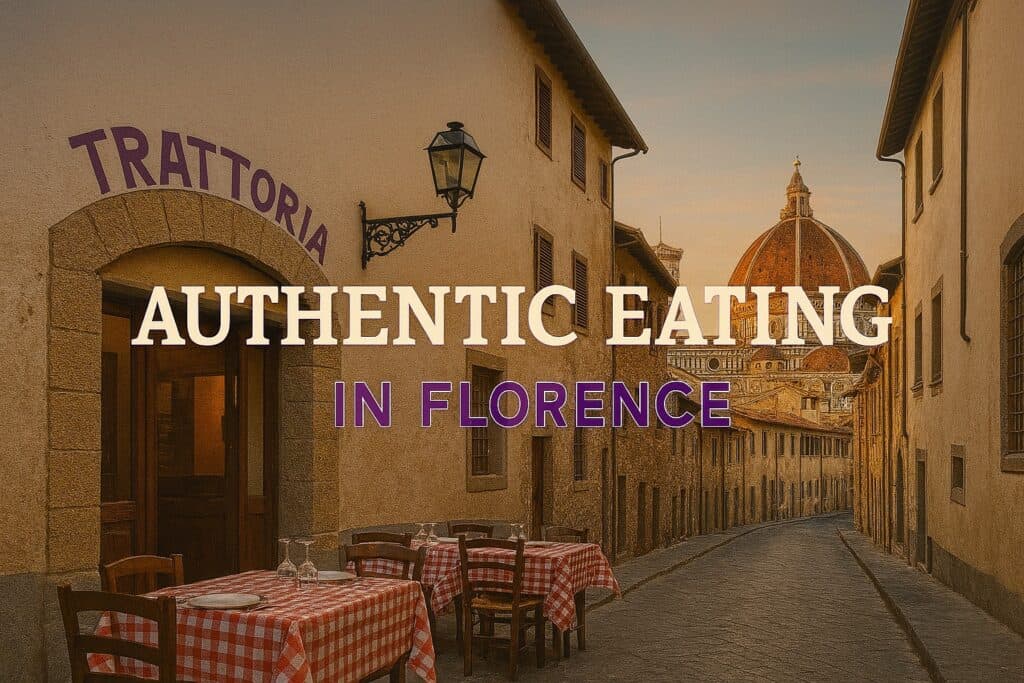Florence has a culinary tradition that dates back centuries. A tradition made up of recipes passed down from generation to generation and of genuine, simple but quality ingredients.
The problem, common to all tourist destinations, is that it is not always easy to distinguish authentic restaurants and trattorias from the infamous “tourist traps,” which focus more on quantity than on an excellent quality-to-price ratio.
So, in general, the question is not whether you will find good food but rather where to find that authentic cuisine that truly tells the story and soul of the city.
In this small guide, I will help you navigate through historic trattorias, traditional restaurants, and characteristic local eateries. My goal is to allow you to have a gastronomic experience that goes beyond a simple meal and truly gets you acquainted with the Florence that eats.
Let’s get started!
The trattorias of the neighborhoods: authenticity away from tourist circuits tourist
If you want to taste real Florentine cuisine, you must also be willing to take some steps outside the classic paths trodden by tourists.
In the historic districts, away from the large squares, you will find trattorias that still preserve the atmosphere of the past and where the cuisine has remained faithful to traditional recipes.
You can easily recognize these places: they often have few tables, a family-friendly and informal atmosphere, and a menu that changes based on the season and available fresh ingredients.
These are the spots where Florentines go to eat when they want to feel at home, where the quality of food comes before everything else.

The cuisine of these trattorias emphasizes the freshness of ingredients and the simplicity of preparation. No frills, no excesses in presentation or overly elaborate plating: just authentic flavors and recipes that have worked for generations.
Some of the trattorias worth knowing about:
- Trattoria da Burde (Rifredi): it is a historic trattoria, active since 1901.It is known for its boiled meats and for the peposo, a typical dish rooted in Tuscan peasant tradition;
- Trattoria Sabatino (Oltrarno): this is a true local restaurant, often frequented by Florentines as well. The atmosphere is that of the trattorias of the past, with wooden tables and genuine, family-friendly hospitality;
- Trattoria da Rocco (Sant’Ambrogio): close to the market, the trattoria offers simple and genuine cuisine that follows the rhythm of the seasons. The dishes change based on the available fresh ingredients;
- Trattoria Cammillo (between Santo Spirito and Ponte Vecchio): a place that manages to combine elegance and tradition. Here you will find an authentic culinary experience, in an environment slightly more refined than the classic trattoria;
- Il Latini (Santa Maria Novella): the restaurant is famous for its large tables for convivial gatherings and generous portions;
- Trattoria Anita (near Piazza della Repubblica): a restaurant that offers simple cuisine at affordable prices, with a genuine approach that characterizes the best Florentine trattorias;
- I’ Brindellone (San Frediano): slightly off-center from the tourist heart of Florence, but witnessing an authentic Florentine trattoria atmosphere.
Restaurants in the Historic Center: Tradition and Quality in the Heart of Florence
Eating in the historic center doesn’t necessarily mean giving up authenticity!
While it’s true that the historic center is full of tourist-oriented trattorias and restaurants, it’s equally true that you can still find places in the city center that maintain high quality and offer genuinely Florentine cuisine.

The secret lies in knowing how to spot the right places. Avoid venues with overly touristy menus (those with pictures of the dishes and translations in four languages), and focus on those that still show a strong connection to local culinary traditions.
In the center, you’ll also find restaurants with a more refined and formal atmosphere — ideal for a special dinner or for those who prefer more attentive service than the casual, sometimes chaotic vibe of old-fashioned taverns.

Some noteworthy names:
- Antico Ristorante Paoli (Piazza della Signoria): the oldest restaurant in Florence, located right in the historic center.
- Trattoria Mario (San Lorenzo): a true Florentine institution, especially known for its bistecca alla fiorentina.
- Osteria Vini e Vecchi Sapori (Piazza della Signoria): a small osteria with just a few tables and handwritten menus — limited seating is a good sign of authenticity.
- Il Latini (Santa Maria Novella): famous for its large communal tables and generous portions.
- Trattoria Anita (near Piazza della Repubblica): offers simple, affordable dishes with a genuine approach typical of the best Florentine trattorias.
- Trattoria la Casalinga (Santo Spirito): a classic Florentine trattoria that’s been around since the early 1960s.
- I’ Brindellone (San Frediano): slightly off the main tourist track, but full of true Florentine trattoria charm.
- Trippaio del Porcellino (via di Carpaccio): not exactly a restaurant, but definitely a must-try street food experience in Florence!
The dishes you absolutely must try if you come to Florence
Let’s move on to the courses.
If you want to experience true Florentine cuisine, there are some traditional dishes that you simply can’t miss. Each of these tells a part of the story and typical culture of Florence.Here are the main ones!
- Bistecca alla fiorentina: the queen of the Florentine table. It must be thick, grilled, and strictly rare. Served without sauces, because the quality of the meat must speak for itself;• Ribollita: the quintessential peasant soup, made with stale bread, black cabbage, and beans. A dish that tells the story of Tuscany’s ability to transform simple ingredients into something extraordinary and tasty;
- Pappa al pomodoro: simple yet perfect with bread, tomato, garlic, and basil. The umpteenth demonstration that Florentine cuisine finds its strength in the simplicity of flavors;
- Lampredotto: the king of Florentine street food, served in a sandwich and seasoned with green or spicy sauce. It is an experience that must be tried at least once;
- Crostini neri: a typical appetizer made with chicken livers and capers.A classic that often appears as the opening of a typical lunch; Cantucci and Vin Santo: the perfect ending. The cantucci should be dipped in Vin Santo, and it is a ritual that closes every respectable Florentine meal.
Want to learn more about the topic? Discover the post about typical Florentine dishes!
Practical tips for an authentic experience
We have extensively discussed how important it is to recognize authentic locations and distinguish them from overly touristy restaurants.To fully experience Florentine cuisine, I provide you with some tips. Use it like a real guide to orient yourself to the best of the city’s culinary offerings!
- Book in advance: the best trattorias and the most authentic restaurants often have few tables. A phone call ahead will save you disappointments;
- Avoid overly touristy menus: if you see too many flags, photographs of dishes, or waiters stopping you in the street, it is probably not the right place to find authentic Florentine cuisine;
- Ask locals for advice: Florentines, shopkeepers, hotel receptionists are often the best sources to discover where to eat really well. Don’t be shy and ask for advice!
- Explore the neighborhoods: some of the best restaurants are located in areas such as San Frediano, Sant’Ambrogio, or Campo di Marte. Locations slightly outside the center but easily reachable on foot;
- Take your time: Tuscan cuisine is not in a hurry. Enjoy the experience, accompany the meal with a good glass of Chianti, and let yourself indulge in the pleasure of conversation.
Conclusion
As you will have certainly understood, once you keep a few tips in mindfinding a place to eat typical food in Florence is quite simple. The city offers truly suitable options for all budgets and tastes!I hope this guide has helped you make a choice.
In the meantime… enjoy your meal!


